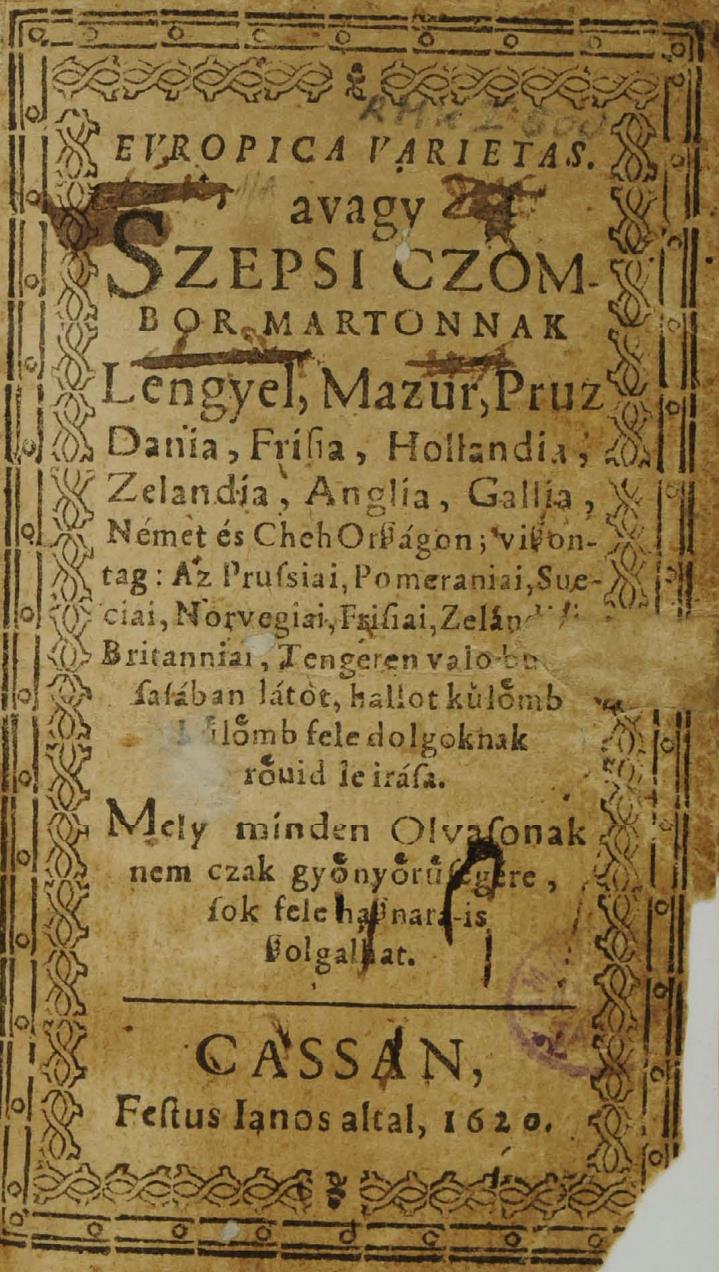Europica Varietas by Márton Szepsi Csombor – Szepsi (Moldava nad Bodvou)
Fact of the Hungarian figure „First university of Hungary (Universities and sciences)”
Part of the „Transfer of the culture” topic
Márton Szepsi Csombor’s Europica Varietas, published in 1620, is considered one of the earliest travel books in Hungarian literature. Born in Szepsi (modern-day Moldava nad Bodvou, Slovakia), Szepsi Csombor was a Reformed pastor and scholar whose travelogue offers a fascinating glimpse into early 17th-century European life. His journey took him through Poland, Germany, the Netherlands, and England, documenting the customs, traditions, and educational institutions of the places he visited. Europica Varietas is not only a travel account but also a reflection on the cultural and intellectual landscapes of Europe, bridging Hungary with the broader European context.
Szepsi Csombor’s educational journey began in 1607 in Késmárk (now Kežmarok, Slovakia), and from 1611, he explored Transylvania while studying in Nagybánya (Baia Mare). After a year at the school in Gönc, he became a teacher in Telkibánya. On May 15, 1616, at the age of 22, he set off on a foreign journey, mostly traveling on foot in “yellow boots and a bright red cloth cloak,” as he described. His travels took him across Poland, Bohemia, and Silesia, where he enrolled as a student at the Danzig (Gdańsk) Gymnasium. From Danzig, he sailed towards the Kingdom of Prussia, and then, unexpectedly, he found himself in England, visiting schools in London and Canterbury. He also visited Switzerland, Provence, France, and Germany, where he became a student at the University of Strasbourg in June 1618. After stops in Heidelberg, Nuremberg, and Kraków, he returned to Hungary in 1620.
Szepsi Csombor’s work is significant as it marks the beginning of Hungarian travel literature, a genre that later expanded with the contributions of other Hungarian writers. Travel literature became a medium for cultural exchange and the spread of new ideas, as it connected readers with distant lands and diverse societies. This intellectual curiosity and the drive to explore new horizons resonated with the broader European trends of the Renaissance and the Enlightenment.
A key figure in the development of Hungarian travel writing was Sándor Bölöni Farkas, whose 1834 travelogue, Journey in North America, stands as a cornerstone of 19th-century Hungarian travel literature. Bölöni Farkas’ account is remarkable for its detailed observations of American society, politics, and culture during a time when the United States was still a relatively young nation. His writings reflect an admiration for American democracy, freedom, and technological progress, offering Hungarian readers a glimpse into a society that was perceived as a model for future development.
Both Szepsi Csombor and Bölöni Farkas illustrate how travel writing served as a tool for cultural and intellectual transfer, enriching Hungarian knowledge of foreign lands while contributing to a broader European discourse. These works allowed Hungary, positioned at the crossroads of East and West, to engage with international ideas and developments, reinforcing the importance of travel literature in shaping Hungarian cultural and intellectual identity.
Throughout history, travel literature has played a pivotal role in the transfer of knowledge and culture in Central Europe, connecting Hungary to broader European and global networks. From the early accounts like Europica Varietas to more modern explorations, these writings highlight the enduring curiosity and engagement of Hungarian intellectuals with the wider world, shaping Hungary’s place within the European cultural and scientific landscape.





